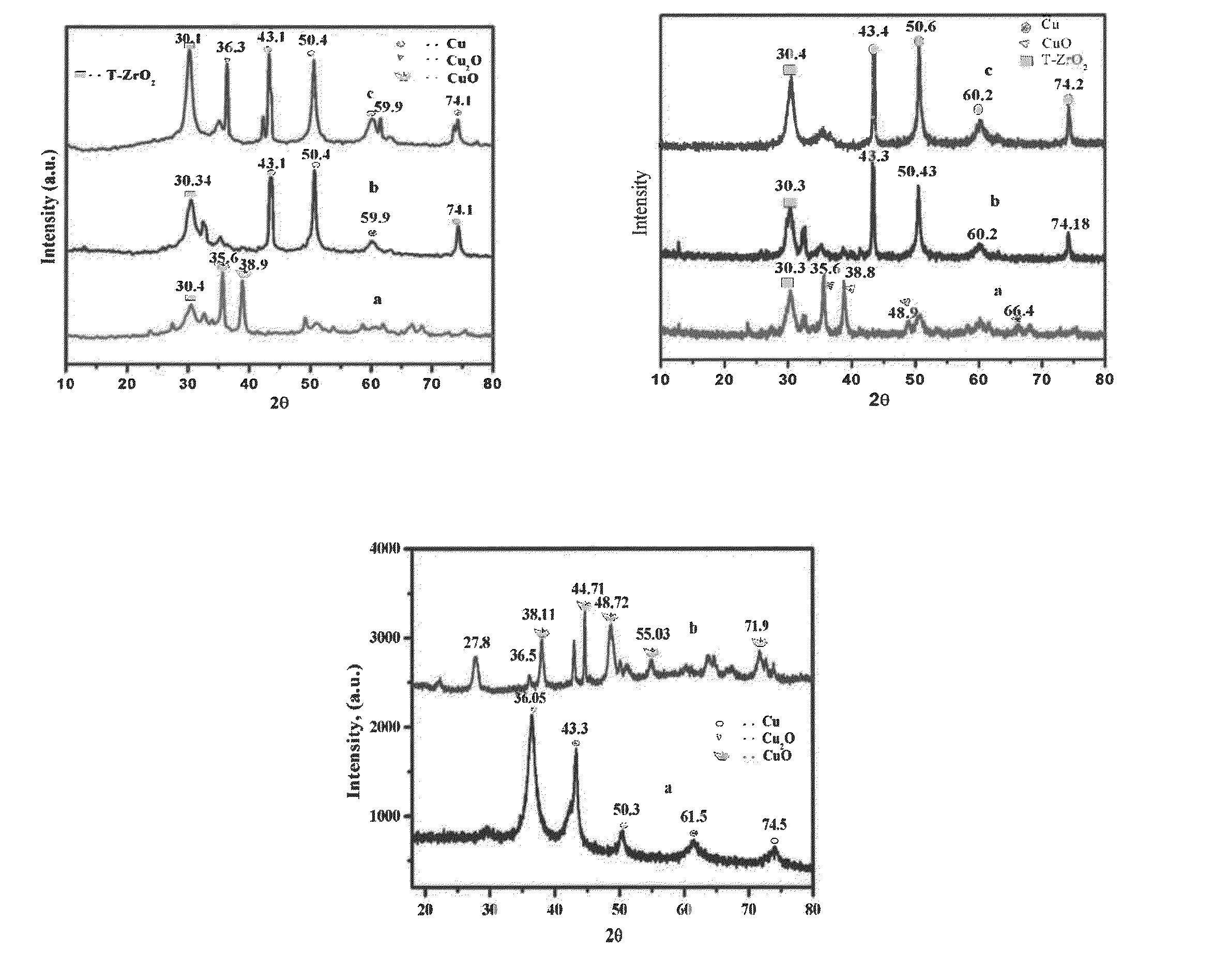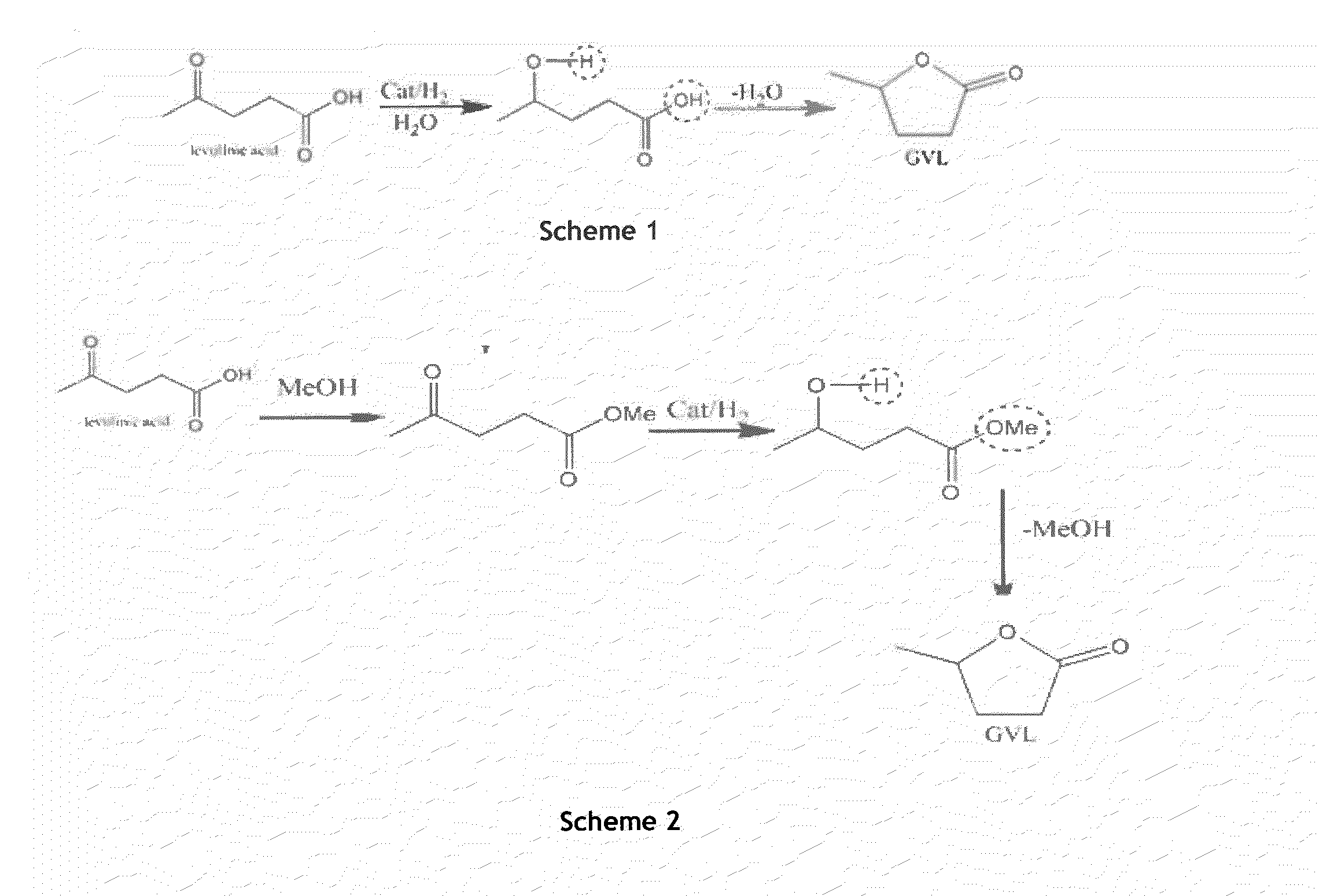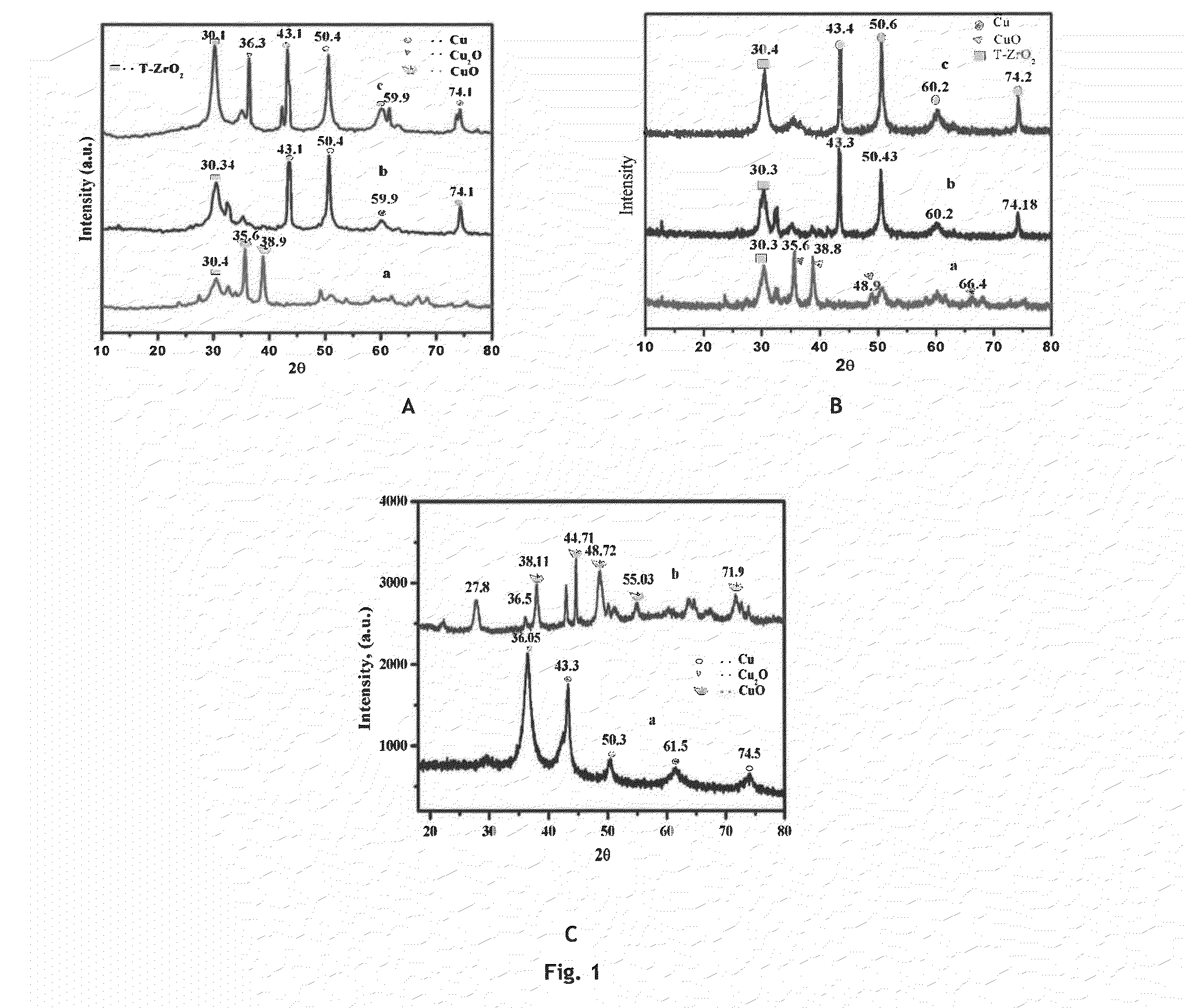PROCESS FOR PREPARATION OF gamma-VALEROLACTONE VIA CATALYTIC HYDROGENATION OF LEVULINIC ACID
a technology of gamma-valerolactone and catalytic hydrogenation, which is applied in the field of preparation of gamma-valerolactone via catalytic hydrogenation of levulinic acid, can solve the problems of low catalyst activity for the hydrogenation of keto-acids like la, unfavorable commercial application, and low catalyst activity, and achieves cost-effective effects
- Summary
- Abstract
- Description
- Claims
- Application Information
AI Technical Summary
Benefits of technology
Problems solved by technology
Method used
Image
Examples
examples
[0058]Following examples are given by way of illustration therefore should not be construed to limit the scope of the invention.
[0059]Materials
[0060]Levulinic acid (99%), methyl levulinate were purchased from Sigma-Aldrich, Bangalore, India while methanol (>99.9%) was purchased from Rankem, India Copper nitrate, zirconium nitrate were purchased from Loba Chemie, Mumbai, India. Hydrogen (>99.99%) purity was obtained from Inox-India.
[0061]Catalyst Preparation
[0062]Copper zirconia (Cu—ZrO2) catalyst was prepared by co-precipitation method. 0.05M aqueous solution of each Cu (NO3)2.3H2O and Zr(NO3)3.3H2O were taken and precipitated using 0.2 M aqueous potassium carbonate at room temperature. The precipitate was aged further for 6 h. at room temperature. The precipitate was separated by filtration and washed with deionized water to remove the traces of potassium. The precipitate thus obtained was dried in static air oven at 373 K for 8 h and calcined at 673 K for 4 h. Prior to the reactio...
PUM
 Login to View More
Login to View More Abstract
Description
Claims
Application Information
 Login to View More
Login to View More - R&D
- Intellectual Property
- Life Sciences
- Materials
- Tech Scout
- Unparalleled Data Quality
- Higher Quality Content
- 60% Fewer Hallucinations
Browse by: Latest US Patents, China's latest patents, Technical Efficacy Thesaurus, Application Domain, Technology Topic, Popular Technical Reports.
© 2025 PatSnap. All rights reserved.Legal|Privacy policy|Modern Slavery Act Transparency Statement|Sitemap|About US| Contact US: help@patsnap.com



